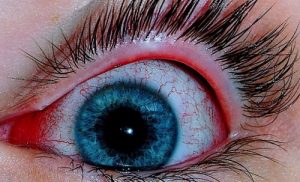Vision is a complex process that requires several parts of the eyes working together. When a defect occurs in any part of the eye, it can affect the vision. Although some of the eye problems tend to go away on their own, the others may require specialist’s care. Some of the common eye abnormalities include glaucoma, cataracts, crossed eyes (strabismus), eyelid twitching, refractive errors, ocular hypertension, uveitis, night blindness, lazy eye (amblyopia) and diabetic retinopathy. A regular eye check-up is often recommended to identify any eye abnormalities that may develop and to initiate effective treatment.
Glaucoma
This occurs with the increased pressure of the fluid within the eye that can damage the optic nerve. This usually does not present any apparent symptoms till irreversible damage has occurred. The treatment includes a surgery that can improve the fluid flow and relieve the pressure on the optic nerve.
This condition is commonly associated with ageing that affects the vision as the result of clouding of the lens. The other types of cataract include congenital cataract where infants are born with it, the secondary cataract that can develop as the result of an eye surgery such as glaucoma and radiation cataract that can occur from radiation exposure. A cataract develops when the protein in the lens of the eye clump together clouding the lens. The symptoms of cataract include cloudy vision, poor night vision, glare, halo around the lights and frequent changes in the prescription glasses. Although surgery is the only effective treatment for cataract, the early form may improve with anti-glare sunglasses, brighter lighting and new eyeglasses.
Strabismus
This is the condition when the individual’s eyes are misaligned or pointed in different directions. This commonly is the result of weak muscles of the eyes. Some of the causes of crossed eyes include untreated long-sightedness and head trauma. The treatment usually consists of enabling the weak muscle of the eye to work and this can consist of a combination of different treatment methods such as contact lenses that correct the long-sightedness, medication to relax the contracted muscles or surgery to realign muscles in the eyes.
Refractive Errors
This condition develops when the light cannot focus directly on the retina. Some of the causes of this include the aging of the lens, problems with the shape of the cornea and the length of the eyeball. Some of the common types of refractive errors include nearsightedness (myopia), farsightedness (hyperopia) and presbyopia. The treatment for refractive errors consists of eyeglasses to correct the error, contact lenses and refractive surgery which alter the shape of the cornea for the light rays to focus on the retina.
Ocular hypertension
This occurs with the increased pressure in the eye and these affected individuals are at risk of developing glaucoma. This condition develops as the result of inadequate drainage of the fluid that enters the eyes causing a build-up of pressure. As ocular hypertension presents no symptoms, the only method of identification is with the regular eye examination. The treatment consists of eye drops to reduce the eye pressure and if that proves to be ineffective, a surgery may be required.



